Download Active Harmony User`s Guide
Transcript
Active Harmony User’s Guide
4.5
Generated by Doxygen 1.8.1.1
Mon Sep 30 2013 23:07:08
CONTENTS
i
Contents
1
Welcome
2
2
Introduction
3
2.1
Motivating Example . . . . . . . . . . . . . . . . . . . . . . . . . . . . . . . . . . . . . . . . . . . . .
3
2.2
Tuning Variables . . . . . . . . . . . . . . . . . . . . . . . . . . . . . . . . . . . . . . . . . . . . . . .
3
2.3
Search Spaces . . . . . . . . . . . . . . . . . . . . . . . . . . . . . . . . . . . . . . . . . . . . . . .
3
2.4
The Feedback Loop . . . . . . . . . . . . . . . . . . . . . . . . . . . . . . . . . . . . . . . . . . . . .
4
2.5
Tuning Session . . . . . . . . . . . . . . . . . . . . . . . . . . . . . . . . . . . . . . . . . . . . . . .
4
3
Getting Started
3.1
Downloading the Source
3.2
Installation
3.2.1
3.3
3.4
4
5
6
6
. . . . . . . . . . . . . . . . . . . . . . . . . . . . . . . . . . . . . . . . . .
6
. . . . . . . . . . . . . . . . . . . . . . . . . . . . . . . . . . . . . . . . . . . . . . . . .
6
Building the Documentation
Testing the Installation
. . . . . . . . . . . . . . . . . . . . . . . . . . . . . . . . . . . .
7
. . . . . . . . . . . . . . . . . . . . . . . . . . . . . . . . . . . . . . . . . . .
7
3.3.1
Standalone Mode
. . . . . . . . . . . . . . . . . . . . . . . . . . . . . . . . . . . . . . . . .
7
3.3.2
Server Mode . . . . . . . . . . . . . . . . . . . . . . . . . . . . . . . . . . . . . . . . . . . .
8
Exploring Further . . . . . . . . . . . . . . . . . . . . . . . . . . . . . . . . . . . . . . . . . . . . . .
8
Harmony Applications
10
4.1
Harmony Server . . . . . . . . . . . . . . . . . . . . . . . . . . . . . . . . . . . . . . . . . . . . . . . 10
4.2
Tuna: The Command-line Tuning Shell . . . . . . . . . . . . . . . . . . . . . . . . . . . . . . . . . . . 12
Configuring Active Harmony
14
5.1
Active Harmony Session Configuration System . . . . . . . . . . . . . . . . . . . . . . . . . . . . . . . 14
5.2
Environment Variables
. . . . . . . . . . . . . . . . . . . . . . . . . . . . . . . . . . . . . . . . . . . 14
Plug-ins
6.1
6.2
16
Search Strategies . . . . . . . . . . . . . . . . . . . . . . . . . . . . . . . . . . . . . . . . . . . . . . 16
6.1.1
Exhaustive (exhaustive.so) . . . . . . . . . . . . . . . . . . . . . . . . . . . . . . . . . . . . . 16
6.1.2
Random (random.so) . . . . . . . . . . . . . . . . . . . . . . . . . . . . . . . . . . . . . . . . 16
6.1.3
Nelder-Mead (nm.so) . . . . . . . . . . . . . . . . . . . . . . . . . . . . . . . . . . . . . . . . 16
6.1.4
Parallel Rank Order (pro.so) . . . . . . . . . . . . . . . . . . . . . . . . . . . . . . . . . . . . 17
Processing Layers . . . . . . . . . . . . . . . . . . . . . . . . . . . . . . . . . . . . . . . . . . . . . . 18
6.2.1
Aggregator (agg.so) . . . . . . . . . . . . . . . . . . . . . . . . . . . . . . . . . . . . . . . . . 18
6.2.2
Code Server (codegen.so) . . . . . . . . . . . . . . . . . . . . . . . . . . . . . . . . . . . . . 19
6.2.3
Point Logger (log.so) . . . . . . . . . . . . . . . . . . . . . . . . . . . . . . . . . . . . . . . . 19
6.2.4
Omega Constraint (constraint.so) . . . . . . . . . . . . . . . . . . . . . . . . . . . . . . . . . . 19
Generated on Mon Sep 30 2013 23:07:08 for Active Harmony User’s Guide by Doxygen
CONTENTS
7
8
6.2.5
TAUdb Interface (TAUdb.so) . . . . . . . . . . . . . . . . . . . . . . . . . . . . . . . . . . . . 20
6.2.6
XML Writer (xmlWriter.so)
. . . . . . . . . . . . . . . . . . . . . . . . . . . . . . . . . . . . . 21
Coding Examples
22
7.1
Launching a New Session . . . . . . . . . . . . . . . . . . . . . . . . . . . . . . . . . . . . . . . . . . 22
7.2
Advanced Session Configuration . . . . . . . . . . . . . . . . . . . . . . . . . . . . . . . . . . . . . . 23
7.3
Using the Client API . . . . . . . . . . . . . . . . . . . . . . . . . . . . . . . . . . . . . . . . . . . . . 23
Module Index
8.1
9
1
25
Modules . . . . . . . . . . . . . . . . . . . . . . . . . . . . . . . . . . . . . . . . . . . . . . . . . . . 25
File Index
9.1
26
File List . . . . . . . . . . . . . . . . . . . . . . . . . . . . . . . . . . . . . . . . . . . . . . . . . . . 26
10 Module Documentation
27
10.1 Harmony Descriptor Management Functions . . . . . . . . . . . . . . . . . . . . . . . . . . . . . . . . 27
10.1.1 Detailed Description
. . . . . . . . . . . . . . . . . . . . . . . . . . . . . . . . . . . . . . . . 27
10.1.2 Function Documentation . . . . . . . . . . . . . . . . . . . . . . . . . . . . . . . . . . . . . . 27
10.2 Session Setup Functions . . . . . . . . . . . . . . . . . . . . . . . . . . . . . . . . . . . . . . . . . . 28
10.2.1 Detailed Description
. . . . . . . . . . . . . . . . . . . . . . . . . . . . . . . . . . . . . . . . 28
10.2.2 Function Documentation . . . . . . . . . . . . . . . . . . . . . . . . . . . . . . . . . . . . . . 28
10.3 Tuning Client Setup Functions . . . . . . . . . . . . . . . . . . . . . . . . . . . . . . . . . . . . . . . . 31
10.3.1 Detailed Description
. . . . . . . . . . . . . . . . . . . . . . . . . . . . . . . . . . . . . . . . 31
10.3.2 Function Documentation . . . . . . . . . . . . . . . . . . . . . . . . . . . . . . . . . . . . . . 31
10.4 Client/Session Interaction Functions . . . . . . . . . . . . . . . . . . . . . . . . . . . . . . . . . . . . 34
10.4.1 Detailed Description
. . . . . . . . . . . . . . . . . . . . . . . . . . . . . . . . . . . . . . . . 34
10.4.2 Function Documentation . . . . . . . . . . . . . . . . . . . . . . . . . . . . . . . . . . . . . . 34
11 File Documentation
37
11.1 hclient.h File Reference . . . . . . . . . . . . . . . . . . . . . . . . . . . . . . . . . . . . . . . . . . . 37
11.1.1 Detailed Description
. . . . . . . . . . . . . . . . . . . . . . . . . . . . . . . . . . . . . . . . 38
Generated on Mon Sep 30 2013 23:07:08 for Active Harmony User’s Guide by Doxygen
1 Welcome
1
2
Welcome
Welcome to the Active Harmony User’s Guide. This manual is designed for users new to auto-tuning, and provides the
information necessary for incorporating auto-tuning into a new project. It describes in detail the terms and concepts
involved in auto-tuning, how they are implemented in the Active Harmony framework, and how to incorporate them into
your client application.
Generated on Mon Sep 30 2013 23:07:08 for Active Harmony User’s Guide by Doxygen
2 Introduction
2
3
Introduction
Auto-tuning refers to the automated search for values to improve the performance of a target application. In this case,
performance is an abstract term used to represent a measurable quantity. A common example of performance for
auto-tuning is time, where the goal is to minimize execution time. Other possible examples include minimizing power
usage or maximizing floating-point operations per second. In general, the Active Harmony framework seeks to minimize
performance values and handles maximization via negation.
In order for auto-tuning to be effective, a set of parameters must exist that affect the target application’s performance.
A simple example is thread count for OpenMP applications, as changing the number of threads involved in executing a
parallel program will certainly have an affect on run-time. Target application parameters are represented within Active
Harmony as tuning variables.
2.1
Motivating Example
As a motivating example, consider the study conducted by Tiwari et al. on optimizing scientific codes. Applications
written for scientific computing typically spend the bulk of their execution time in compute-heavy loops. These loops
are prime candidates for a compiler optimization known as loop unrolling and tiling. Modifying the number of times a
compiler unrolls or tiles a loop results in a distinct binary with different performance properties. However, the optimal
number of times to unroll or tile any given loop is virtually impossible to know at compile time since it is dependent on
target architecture. Compiling a priori with all possible unrolling and tiling values is prohibitively expensive, but using a
sub-optimal binary also wastes valuable compute cycles.
Tiwari solved this problem by allowing an auto-tuner to search for optimal loop unrolling and tiling values. Using this
approach, only a small fraction of the possible code variants are built, and an optimal (or near-optimal) version of the
code is used for the majority of the execution.
We refer to this example throughout the rest of this manual.
2.2
Tuning Variables
Tuning variables in Active Harmony require a distinct name, and must be declared as one of the following three types:
• INT (Integer numbers)
This value range is constrained by a minimum (m), maximum (M), and a stepping value (s) where m<=M and
s>0.
• REAL (Real numbers)
This value range is constrained by a minimum (m), maximum (M), and a stepping value (s) where m<=M and
s>0.
• ENUM (Enumerated strings)
This value range is constrained by an explicit list of valid values.
2.3
Search Spaces
Each tuning variable may be seen as a 1-dimensional range of values that are valid for a given application parameter.
A collection of N tuning variables then creates an N-dimensional Euclidean space. We refer to this in Active Harmony
as the search space. Points within the space represent a single possible configuration for the target application. For
instance, if the following search space is defined:
Generated on Mon Sep 30 2013 23:07:08 for Active Harmony User’s Guide by Doxygen
2.4
The Feedback Loop
4
Variable Name
tile
unroll
compiler
Bounds
m=1, M=4, s=1
m=2, M=16, s=2
list={"GCC", "Intel", "PGI"}
The search will then be conducted within a 3-dimensional space, and (4, 12, "Intel") would be a valid point
within that space.
2.4
The Feedback Loop
Active Harmony works in tandem with a target application by manipulating tuning variables and observing the resulting
performance. This creates a feedback loop where Active Harmony uses each incoming performance observation to
further refine its search for optimal values. In Active Harmony, the tuning element is called the tuning session and the
target application is called the client. They are connected in the following manner:
1. The tuning session generates a new point.
2. The client fetches the point, and operates for some period of time while measuring performance.
3. The client reports the performance value back to the tuning session.
4. The tuning session analyzes the report to guide its search for optimal points.
5. Repeat until the search converges.
Performance Report
Client
Application
Tuning
Session
Point Value Fetch
Figure 1: The generalized auto-tuning feedback loop.
2.5
Tuning Session
Conceptually, the tuning session is responsible for generating candidate points. Active Harmony divides this task into
two key abstractions, the search strategy and the processing layers.
The search strategy determines how new candidate points are selected from the search space. For instance, one
strategy might be to ignore all performance reports and simply return a random point. Several search strategies come
bundled with Active Harmony, each with different properties to support a wide range of client applications. Note that
search strategies operate purely at a numeric level by mapping search space points to reported performance values.
They have no awareness of how the point will be used by the client.
The processing layers handle any additional tasks that must occur either before or after a point is generated. A prime
example is the post processing to convert a numeric candidate point into client usable parameters. Consider the compiler
loop unrolling and tiling example described earlier. The client cannot directly use a numeric point such as (3, 8, "Intel") to execute a code variant. These values must first be sent to a compiler that will produce a binary to be
executed by the client.
Generated on Mon Sep 30 2013 23:07:08 for Active Harmony User’s Guide by Doxygen
2.5
Tuning Session
5
Performance Report
ANALYZE
3 2 1
Search
Strategy
GENERATE
Fetch Queue
Point Value Fetch
Figure 2: Detailed view of the Active Harmony tuning session.
The search strategy sits at the core of the tuning session, surrounded by concentric rings that represent processing
layers. As points leave the search strategy, they must pass through the generation phase of each processing layer
before it is made available to the client. Similarly, as performance reports are returned, they must pass through the
analyze phase of each processing layer before it is received by the search strategy.
The processing layers are executed sequentially — in forward-order when leaving the search strategy, and backwardsorder upon return. An individual processing layer may implement the generate action analyze action independent of one
another, or both together to support paired functionality.
Finally, Active Harmony provides flexibility by implementing search strategies and processing layers as plug-ins that are
loaded by the tuning session. This structure allows Active Harmony to meet the needs of any auto-tuning application
with minimal effort. A specialized auto-tuner can effectively be built by parts.
Active Harmony is distributed with a set of search strategies and processing layers. Detailed information about these
plug-ins can be found in the Plug-Ins section.
Generated on Mon Sep 30 2013 23:07:08 for Active Harmony User’s Guide by Doxygen
3 Getting Started
3
6
Getting Started
3.1
Downloading the Source
The latest release of Active Harmony can always be found at:
• http://www.dyninst.org/harmony
Release tarballs represent snapshots of our development repository in a tested and stable state. If you’d like to try new
features or bug fixes, you can download a version directly from our Git repository:
Directly via git:
• git clone http://git.dyninst.org/activeharmony.git
Or, through our repository’s web interface at:
• http://git.dyninst.org/?p=activeharmony.git;a=summary
3.2
Installation
Once you obtain a copy of the source tree (via tarball or Git), the following utilities are necessary for a successful build:
• GNU Make
• C99-compliant compiler
To build and install Active Harmony, issue the following command:
$ make install
By default, this will create relevant files within the source tree. If you’d like to install the software elsewhere, use the
PREFIX variable:
$ make install PREFIX=$HOME/local/harmony-4.5
This make system is also sensitive to standard build flags supplied by the environment:
$ make CFLAGS=-O3 LDFLAGS=-L/usr/local/lib64
Furthermore, some processing layers bundled with Active Harmony depend on external packages. Build targets with
such a dependency are protected behind specific environment variables. The make system will only attempt to build the
processing layer if the associated package variable is defined. Otherwise, that target is skipped.
Dependent Package Variables
Layer
TAUdb
XML Writer
Variable
Package Download URL
LIBTAUDB
LIBXML2
http://www.cs.uoregon.edu/research/tau/downloads.php
http://www.xmlsoft.org/downloads.html
Additional details on any of these build variables can be found in their respective Processing Layer documentation page
of the User’s Guide.
Generated on Mon Sep 30 2013 23:07:08 for Active Harmony User’s Guide by Doxygen
3.3
Testing the Installation
3.2.1
7
Building the Documentation
The following software packages will also be necessary to build the documentation:
• Doxygen
• TeX Live (pdflatex)
• Inkscape
To generate documentation in PDF and HTML formats, issue the following command:
$ make doc
This should leave .pdf files and .html directories in the doc/ directory.
3.3
Testing the Installation
There are two separate modes of operation for using Active Harmony, standalone mode and server mode. Both modes
are described below and can be used to verify a successful build.
3.3.1
Standalone Mode
This is the default model for Active Harmony clients. When initiating a new tuning session, the target application spawns
its own dedicated tuning process automatically.
Correct operation relies on the HARMONY_HOME environment variable. It should be set to wherever your version of
Active Harmony has been installed. Namely, it should match the PREFIX variable used during make install. For
example, the following command would match the installation described in the Installation section above (assuming
Bourne shell semantics):
$ export HARMONY_HOME=$HOME/local/harmony-4.5
If no PREFIX variable was used during make install, HARMONY_HOME should be set to the base directory of the
source tree.
Navigate to the example/client_api source directory. The file example_c should exist if the build was successful. If HARMONY_HOME environment variable is set up correctly, the example should be immediately executable.
The example may be run as follows:
$ ./example_c
This should produce the output similar to the following:
Starting Harmony...
68, 51, 51, 51, 51,
48, 68, 51, 51, 51,
48, 47, 67, 51, 51,
48, 47, 46, 67, 51,
48, 47, 46, 45, 66,
51
51
51
51
51
=
=
=
=
=
5464
4747
4040
3525
3206
<... snip ...>
9,
9,
9,
8,
9,
35,
36,
34,
32,
32,
49,
47,
48,
45,
48,
53,
53,
53,
56,
53,
79,
77,
76,
77,
77,
75
74
74
74
75
=
=
=
=
=
367
385
367
329
327
This example uses a simple arithmetic function with six variables to produce a synthetic performance value.
Generated on Mon Sep 30 2013 23:07:08 for Active Harmony User’s Guide by Doxygen
3.4
3.3.2
Exploring Further
8
Server Mode
This running model requires tuning clients to communicate to a server via a TCP connection. To run the server:
$ ./hserver [configuration_file]
The HARMONY_CONFIG environment variable can also be used to specify which configuration file to use. For example
(assuming Bourne shell semantics):
$ HARMONY_CONFIG=/some/other/dir/harmony.cfg ./hserver
Once the server is running, we must inform the client to use it. This is accomplished through two environment variables,
HARMONY_S_HOST and HARMONY_S_PORT. As a quick example, to run the previous example in server mode, one
could use the following command (assuming Bourne shell semantics):
$ HARMONY_S_HOST=localhost ./example_c
If HARMONY_S_HOST is defined, the example will attempt to contact a Harmony Server listening on the specified
host (in this case, localhost) on port 1979. If you wish to connect to a server running on a different port, set the
HARMONY_S_PORT environment variable. For example:
$ export HARMONY_S_HOST=other.host.net
$ export HARMONY_S_PORT=2013
An additional perk of running in Server Mode is the web interface. Simply point a javascript-enabled browser to the
host:port of a running Harmony Server, and it will provide a visual interface for any tuning sessions under its control.
3.4
Exploring Further
Now that you have a sample Harmony client working, you can begin to explore the flexibility of the Active Harmony
framework. All the examples below make use of the Configuration System, which is documented in the User’s Manual.
By default, the PRO search strategy is used. It can easily be changed by setting the SESSION_STRATEGY configuration variable. This way, search strategies are easily comparable. For instance, the following example instructs the
session to use a random search strategy instead:
$ ./example_c SESSION_STRATEGY=random.so
In addition to changing the core search strategy, additional processing layers can be easily added to the feedback loop.
For instance, if you’d like to write a log of the search session to disk, use the Point Logger processing layer:
$ ./example_c SESSION_LAYER_LIST=log.so LOGFILE=search.log
Wall-time is a non-deterministic performance metric. Multiple factors such as competing processes, or even CPU
temperature can perturb measurement. This phenomenon can be mitigated by performing multiple tests of each point
and aggregating the results with the Aggregator processing layer:
$ ./example_c SESSION_LAYER_LIST=agg.so AGG_TIMES=5 AGG_FUNC=median
As described in the Tuning Session, processing layers may be stacked. However, it is important to remember that
processing layers are not commutative; their order is important. Consider the following two tuning sessions:
$ ./example_c SESSION_LAYER_LIST=agg.so:log.so \
LOGFILE=search.log AGG_TIMES=5 AGG_FUNC=median
and
$ ./example_c SESSION_LAYER_LIST=log.so:agg.so \
LOGFILE=search.log AGG_TIMES=5 AGG_FUNC=median
Generated on Mon Sep 30 2013 23:07:08 for Active Harmony User’s Guide by Doxygen
3.4
Exploring Further
9
Only the order of the processing layers have changed, but the second invocation will produce a much smaller log file.
This is because the Aggregator is the outermost layer and receives performance reports before the Point Logger. The
Point Logger is then unaware of the repeated experiments and only records the resulting aggregated performance value.
In the first invocation, the Point Logger records each performance report before the Aggregator has a chance to unify
them. This results in a log file with many repeated experiments.
A real-world example is provided in example/code_generation source directory. That example relies on the
code-server, MPI, and CHiLL. Additional details can be found in example/code_generation/README of the
source distribution.
Generated on Mon Sep 30 2013 23:07:08 for Active Harmony User’s Guide by Doxygen
4 Harmony Applications
4
10
Harmony Applications
4.1
Harmony Server
For some advanced uses of auto-tuning, multiple clients need to communicate to a single tuning session. For instance,
if an MPI program is being tuned, all the constituent ranks may participate in parallel to expedite the search. In this case,
the Active Harmony Server must be used as a central multiplexing unit.
Client 1
Client 2
Harmony
Server
Client 3
Client 4
Client N
Figure 3: Supporting multiple clients within the feedback loop.
Usage Syntax
hserver [config_file_name]
The server has no mandatory parameters, and can be started with a plain invocation. A configuration file may optionally
be provided as a parameter, otherwise harmony.cfg will be used (if it exists). The configuration system provides a
unified key/value store that may be queried by all members of the Active Harmony framework. See the Configuration
section for more details.
Harmony Server Configuration Variables
Key
SERVER_PORT
Type
Integer
Default
1979
Description
The port that the Harmony Server will bind and listen to.
Read only once when the Harmony Server is loaded.
Any configuration directives loaded by the server will be automatically merged with the sessions that it manages. If there
is a key conflict between the server and session configuration environment, the session’s key takes precedence.
Client Modification
Using the Active Harmony server is functionally equivalent to the stand-alone case. Users need only change two
environment variables on the client machines.
Generated on Mon Sep 30 2013 23:07:08 for Active Harmony User’s Guide by Doxygen
4.1
Harmony Server
Environment Variable
HARMONY_S_HOST
HARMONY_S_PORT
11
Description
Hostname of the machine running the Harmony Server.
TCP/IP port allocated by Harmony Server.
When defined, these environment variables instruct clients to connect to the specified hostname:port pair instead of
spawning a local tuning session. Multiple clients may then work together on a single search problem.
Web Server
The Harmony Server also provides a built-in web server as an interface to the sessions it controls. Use a Javascriptenabled web browser to connect to the host and port the server is running on. For example, the URL for connecting to
a locally-running server on the default port would be:
http://localhost:1979
Replace the host or port to match the desired Harmony Server as necessary. A screen similar to the following should
appear:
Figure 4: Session selection menu of the web interface.
Since the Harmony Server can manage more than one session at a time, there may be multiple lines in the table. You
can view detailed information regarding a specific session by clicking its name in the first column. This should produce
a screen similar to the following:
Figure 5: Detailed view of a particular session.
Generated on Mon Sep 30 2013 23:07:08 for Active Harmony User’s Guide by Doxygen
4.2
Tuna: The Command-line Tuning Shell
12
The detailed session view includes several ways to help you visualize the current session. On the left, a table of the
ten most recently reported point/performance pairs, as well as the best performing point found thus far. The list can be
extended to display as many as 50 entries. On the right, a plot of the entire search is drawn with respect to performance
value along the y-axis, and time along the x-axis. Hovering the mouse pointer over any individual marker will produce
details of the point/performance pair.
4.2
Tuna: The Command-line Tuning Shell
Tuna is a tool for tuning the parameters of command-line applications. Given a target application and a tuning specification, Tuna is able to perform a search for optimal parameter values automatically.
Usage Syntax
tuna <tunable_variables> [options] program [program_args]
Tunable Variable Declaration
Flag Usage
-i=<name>,<min>,<max>,<step>
-r=<name>,<min>,<max>,<step>
-e=<name>,<val_1>,..,<val_n>
Description
Declare an integer number variable called name where
valid values fall between min and max with a stride of
size step.
Declare a real number variable called name where valid
values fall between min and max with a stride of size
step.
Declare an enumerated variable called name whose
values must be val_1 or val_2 or .. or val_n.
Tuna provides three built-in methods for measuring the performance of a target application. These include wall-time,
user-time, or system-time used by the target application. To support a wider range of possible performance metrics,
a fourth method monitors output from the target application and parses a floating-point value from its final line as the
performance value. This allows virtually any measure of performance, so long as it can be collected by an external
wrapper program and printed.
Additional Options
Flag Usage
-m=<metric>
Description
Specify how to measure the performance of the child
process, where metric is:
wall for wall time (default),
user for user CPU time,
sys for system CPU time, or
output to parse a number from the final line of child
output.
Generated on Mon Sep 30 2013 23:07:08 for Active Harmony User’s Guide by Doxygen
4.2
Tuna: The Command-line Tuning Shell
-q
-v
-n=<num>
13
Suppress client application output.
Print additional informational output.
Run child program at most num times.
If the tunable variables cannot be supplied directly as arguments to the client application, then you must provide additional parameters to describe the format of the argument vector. Each argument (starting with and including the program
binary) may include a percent sign (%) followed by the name of a previously defined tunable variable. This identifier may
be optionally bracketed by curly-braces. Values from the tuning session will then be used to complete a command-line
instance. A backslash (\) may be used to produce a literal %.
Usage Example
./tuna -i=tile,1,10,1 -i=unroll,2,12,2 -n=25 ./matrix_mult -t %tile -u %unroll
The above usage example defines a parameter space with two integer variables via the -i flag. The first variable (tile)
is permitted to be between 1 and 10, inclusive. The second variable (unroll) is permitted to be even numbers between
2 and 12, inclusive. The tuning loop is limited to at most 25 iterations due to the optional -n flag. The remaining
parameters specify that the target application (matrix_mult) should be launched with Harmony-chosen values for
tile and unroll as the second and fourth arguments, respectively. Wall-time of each execution will be measured and
reported, as it is the default performance metric.
Tuna makes any command-line application that provides performance related parameters a viable target for auto-tuning.
As an example, the GCC compiler suite provides hundreds of command-line arguments to control various details of its
compilation process. Finding optimal values for these arguments is a natural task for Tuna. A user need only specify
which arguments are relevant for their optimization task and a method to measure the resulting performance.
Generated on Mon Sep 30 2013 23:07:08 for Active Harmony User’s Guide by Doxygen
5 Configuring Active Harmony
5
14
Configuring Active Harmony
The Active Harmony Framework may be configured through two distinct, but similar systems. The session-wide Harmony
Configuration System, and general environment variables.
5.1
Active Harmony Session Configuration System
Each tuning session provides a centralized configuration environment. Similar to shell environment variables, tuning
session configuration directives take the form of simple key/value string pairs. Key strings are case insensitive, and may
only consist of alphanumeric characters or the underscore. Value strings are stored as-is, and interpretation depends
on the key.
The backslash (\) character may be used within the value string as a quoting mechanism. A backslash preserves the
literal value of the next character that follows.
Configuration directives may also be read from a file containing one key/value pair per line. The first equals sign (=)
separates the key from the value string, and the value string extends until a newline (\n) or hash (#) which indicates
comments.
Each tuning session has a unique configuration environment. All entities involved with a tuning session (clients, search
strategies, processing layers, etc.) may query this system. The configuration environment is initialized at session
creation time through harmony_setcfg() function calls. After a session has been launched, clients may query the configuration environment through harmony_getcfg() and harmony_setcfg() function calls.
Note
The Harmony Server is a special case. It contains its own private configuration environment that is merged with
any sessions that it manages. If there is a key conflict between the server and session configuration environment,
the session’s key takes precedence.
This manual documents configuration variables in tables with four columns. The documentation for subsystems such
as Search Strategies and Processing Layers will contain an individual table that describes the specific configuration
variables relevant to themselves. The list will be organized in a table with the following columns:
Column
Key
Type
Description
Key string for configuration system.
How the value string will be interpreted (Integer, Real,
String, etc.)
If unspecified, this value will be used instead.
Textual description of the directive’s function.
Default
Description
Additionally, there are several session-related configuration variables that are used to control sessions and how they are
initialized.
Session-related Configuration Variables
Key
SESSION_STRATEGY
SESSION_LAYER_LIST
CLIENT_COUNT
PER_CLIENT_STORAGE
5.2
Type
String
String
Integer
Integer
Default
pro.so
[none]
1
1
Description
The search strategy to use for a particular session.
The processing layers to use for a particular session.
The number of expected clients.
The number of testing points to prepare for each
expected client.
Environment Variables
Certain subsystems of the Active Harmony Framework may require additional information before it can connect to a
session and, by extension, the session-wide configuration system. When necessary, this information may be retrieved
Generated on Mon Sep 30 2013 23:07:08 for Active Harmony User’s Guide by Doxygen
5.2
Environment Variables
15
through the subsystem’s environment.
Here are a list of environment variables commonly used:
Environment Variable
HARMONY_HOME
HARMONY_S_HOST
HARMONY_S_PORT
Description
File path of the directory containing an Active Harmony
installation. This is effectively the value of PREFIX when
Harmony was built from source.
If defined, tuning clients (using harmony_join()) will
attempt to connect to a Harmony Server on this host.
If defined (along with HARMONY_S_HOST), tuning
clients will used this variable as the port when
connecting to a running Harmony Server.
Generated on Mon Sep 30 2013 23:07:08 for Active Harmony User’s Guide by Doxygen
6 Plug-ins
6
16
Plug-ins
As described in the Tuning Session section, Active Harmony provides a modular interface for flexible functionality. The
session API functions harmony_strategy() and harmony_layer_list() specify which plug-in’s will be loaded by the tuning
session. See their individual documentation page for details on their use.
The Active Harmony framework currently allows for two types of plug-ins, search strategies and processing layers.
6.1
Search Strategies
Search strategies encapsulate the core search logic of an Active Harmony tuning session. Ultimately, it decides the next
search space point to be tested. While each search strategy may have radically different methods for selecting the next
point, all strategies share the same interface. This allows tuning sessions to easily switch from one strategy to another.
See the Tuning Session section for an overview of the search strategy’s role within the larger tuning session context.
6.1.1
Exhaustive (exhaustive.so)
This search strategy starts with the minimum-value point (i.e., using the minimum value for each tuning variable), and
incrementing the tuning variables like an odometer until the maximum-value point is reached. This strategy is guaranteed
to visit all points within a search space.
It is mainly used as a basis of comparison for more intelligent search strategies.
Configuration Variables
Key
PASSES
6.1.2
Type
Integer
Default
1
Description
Number of passes through the search space before the
search is considered converged.
Random (random.so)
This search strategy generates random points within the search space. Using∗ a pseudo-random method, a value is
selected for each tuning variable according to its defined bounds. This search will never reach a converged state.
It is mainly used as a basis of comparison for more intelligent search strategies.
Configuration Variables
Key
RANDOM_SEED
6.1.3
Type
Integer
Default
time()
Description
Value to seed the pseudo-random number generator.
Default is to seed the random generator by time.
Nelder-Mead (nm.so)
This search strategy uses a simplex-based method to estimate the relative slope of a search space without calculating
gradients. It functions by evaluating the performance for each point of the simplex, and systematically replacing the
worst performing point with a reflection, expansion, or contraction in relation to the simplex centroid. In some cases, the
entire simplex may also be shrunken.
Note
Due to the nature of the underlying algorithm, this strategy is best suited for serial tuning tasks. It often waits on a
single performance report before a new point may be generated.
For details of the algorithm, see:
Generated on Mon Sep 30 2013 23:07:08 for Active Harmony User’s Guide by Doxygen
6.1
Search Strategies
17
Nelder, John A.; R. Mead (1965). "A simplex method for function minimization". Computer Journal 7:
308–313. doi:10.1093/comjnl/7.4.308
Configuration Variables
Key
SIMPLEX_SIZE
Type
Integer
Default
N+1
RANDOM_SEED
Integer
time()
INIT_METHOD
String
point
INIT_PERCENT
Real
0.35
REJECT_METHOD
String
penalty
REFLECT
EXPAND
SHRINK
FVAL_TOL
Real
Real
Real
Real
1.0
2.0
0.5
0.0001
SIZE_TOL
Real
0.05∗r
6.1.4
Description
Number of vertices in the simplex. Defaults to the
number of tuning variables + 1.
Value to seed the pseudo-random number generator.
Default is to seed the random generator by time.
Initial simplex generation method. Valid values are
"point", "point_fast", and "random" (without quotes).
Initial simplex size as a percentage of the total search
space. Only for "point" and "point_fast" initial simplex
methods.
How to choose a replacement when dealing with
rejected points:
Penalty - Use this method if the chance of point rejection
is relatively low. It applies an infinite penalty factor for
invalid points, allowing the Nelder-Mead algorithm to
select a sensible next point. However, if the entire
simplex is comprised of invalid points, an infinite loop of
invalid points may occur.
Random - Use this method if the chance of point
rejection is high. It reduces the risk of infinitely selecting
invalid points at the cost of increasing the risk of
deforming the simplex.
Multiplicative coefficient for simplex reflection step.
Multiplicative coefficient for simplex expansion step.
Multiplicative coefficient for simplex shrink step.
Convergence test succeeds if difference between all
vertex performance values fall below this value.
Convergence test succeeds if simplex size falls below
this value. Default is 5% of the initial simplex radius.
Parallel Rank Order (pro.so)
This search strategy uses a simplex-based method similar to the Nelder-Mead algorithm. It improves upon the Nelder-Mead algorithm by allowing the simultaneous search of all simplex points at each step of the algorithm. As such, it is
ideal for a parallel search utilizing multiple nodes, for instance when integrated in OpenMP or MPI programs.
Configuration Variables
Generated on Mon Sep 30 2013 23:07:08 for Active Harmony User’s Guide by Doxygen
6.2
Processing Layers
18
Key
SIMPLEX_SIZE
Type
Integer
Default
N+1
RANDOM_SEED
Integer
time()
INIT_METHOD
String
point
INIT_PERCENT
Real
0.35
REJECT_METHOD
String
penalty
REFLECT
EXPAND
SHRINK
FVAL_TOL
Real
Real
Real
Real
1.0
2.0
0.5
0.0001
SIZE_TOL
Real
0.05∗r
6.2
Description
Number of vertices in the simplex. Defaults to the
number of tuning variables + 1.
Value to seed the pseudo-random number generator.
Default is to seed the random generator by time.
Initial simplex generation method. Valid values are
"point", "point_fast", and "random" (without quotes).
Initial simplex size as a percentage of the total search
space. Only for "point" and "point_fast" initial simplex
methods.
How to choose a replacement when dealing with
rejected points:
Penalty - Use this method if the chance of point rejection
is relatively low. It applies an infinite penalty factor for
invalid points, allowing the PRO algorithm to select a
sensible next point. However, if the entire simplex is
comprised of invalid points, an infinite loop of invalid
points may occur.
Random - Use this method if the chance of point
rejection is high. It reduces the risk of infinitely selecting
invalid points at the cost of increasing the risk of
deforming the simplex.
Multiplicative coefficient for simplex reflection step.
Multiplicative coefficient for simplex expansion step.
Multiplicative coefficient for simplex shrink step.
Convergence test succeeds if difference between all
vertex performance values fall below this value.
Convergence test succeeds if simplex size falls below
this value. Default is 5% of the initial simplex radius.
Processing Layers
Processing layers functionally surround the tuning session. They allow for additional processing before a strategy
receives a performance report, or before a strategy receives a performance report, or both. Processing layers are
stackable, which allow for an arbitrarily complex auto-tuner to be built by parts.
See the Tuning Session section for an overview of the processing layer’s role within the larger tuning session context.
6.2.1
Aggregator (agg.so)
This processing layer forces each point to be evaluated multiple times before it may proceed through the auto-tuning
feedback loop. When the requisite number of evaluations has been reached, an aggregating function is applied to
consolidate the set performance values.
Configuration Variables
Key
AGG_FUNC
Type
String
Default
[none]
AGG_TIMES
Integer
[none]
Description
Aggregation function to use. Valid values are "min",
"max", "mean", and "median" (without quotes).
Number of performance values to collect before
performing the aggregation function.
Generated on Mon Sep 30 2013 23:07:08 for Active Harmony User’s Guide by Doxygen
6.2
6.2.2
Processing Layers
19
Code Server (codegen.so)
This processing layer passes messages from the tuning session to a running code generation server. Details on how to
configure and run a code generation tuning session are provided in code-server/README of the distribution tarball.
Code Server URLs
The code server uses a proprietary set of URL’s to determine the destination for various communications. They take the
following form:
dir://<path>
ssh://[user@]<host>[:port]/<path>
tcp://<host>[:port]
All paths are considered relative. Use an additional slash to specify an absolute path. For example:
dir:///tmp
ssh://code.server.net:2222//tmp/codegen
Configuration Variables
Key
SERVER_URL
TARGET_URL
Type
URL
URL
Default
[none]
[none]
REPLY_URL
URL
[tmpdir]
TMPDIR
SLAVE_LIST
String
String
/tmp
[none]
Description
Destination of messages from session to code server.
Destination of binary files from code server to target
application.
Destination of reply messages from code server to
session. A reasonable directory in /tmp will be generated
by default if left blank.
Session local path to store temporary files.
Comma separated list of [host n] pairs, where n
slaves will run on host. For example
bunker.cs.umd.edu 4,
nexcor.cs.umd.edu 4 will instruct the code server
SLAVE_PATH
6.2.3
String
[none]
to spawn 8 total slaves between two machines.
Path on slave host to store generated binaries before
being sent to the target application.
Point Logger (log.so)
This processing layer writes a log of point/performance pairs to disk as they flow through the auto-tuning feedback loop.
Configuration Variables
Key
LOGFILE
LOGFILE_MODE
6.2.4
Type
String
String
Default
(none)
a
Description
Name of point/performance log file.
Mode to use with fopen(). Valid values are "a" and
"w" (without quotes).
Omega Constraint (constraint.so)
Active Harmony allows for basic bounds on tuning variables during session specification, where each tuning variable is
bounded individually. However, some target applications require tuning variables that are dependent upon one another,
reducing the number of valid parameters from the strict Cartesian product.
This processing layer allows for the specification of such variable dependencies through algebraic statements. For
example, consider a target application with tuning variables x and y. If x may never be greater than y, one could use
the following statement:
Generated on Mon Sep 30 2013 23:07:08 for Active Harmony User’s Guide by Doxygen
6.2
Processing Layers
20
x < y
Also, if the sum of x and y must remain under a certain constant, one could use the following statement:
x + y = 10
If multiple constraint statements are specified, the logical conjunction of the set is applied to the Search Space.
Note
This processing layer requires the Omega Calculator, which is available at:
https://github.com/davewathaverford/the-omega-project/.
Configuration Variables
Key
OC_BIN
Type
Filename
Default
oc
CONSTRAINTS
String
[none]
CONSTRAINT_FILE
Filename
[none]
QUIET
Boolean
0
Description
Location of the Omega Calculator binary. The PATH
environment variable will be searched if not found initially.
Constraint statements to be used during this session.
This variable has precedence over
CONSTRAINT_FILE.
If the CONSTRAINTS variable is not specified, they will
be loaded from this file.
Bounds suggestion and rejection messages can be
suppressed by setting this variable to 1.
Note
Some search strategies provide a REJECT_METHOD configuration variable that can be used to specify how to deal
with rejected points. This can have great affect on the productivity of a tuning session.
6.2.5
TAUdb Interface (TAUdb.so)
Warning
This processing layer is still considered pre-beta.
This processing layer uses the TAU Performance System’s C API to keep a log of point/performance pairs to disk as
they flow through the auto-tuning feedback loop.
The LIBTAUDB build variable must be defined at build time for this plug-in to be available, since it is dependent on a
library distributed with TAU. The distribution of TAU is available here:
• http://www.cs.uoregon.edu/research/tau/downloads.php
And LIBTAUDB should point to the tools/src/taudb_c_api directory within that distribution.
Configuration Variables
Key
TAUDB_NAME
TAUDB_STORE_METHOD
Type
String
String
Default
[none]
one_time
TAUDB_STORE_NUM
CLIENT_COUNT
Integer
Integer
0
1
Description
Name of the PostgreSQL database.
Determines when statistics are computed:
one_time - With each database write.
real_time - At session cleanup time.
Number of reports to cache before writing to database.
Number of participating tuning clients.
Generated on Mon Sep 30 2013 23:07:08 for Active Harmony User’s Guide by Doxygen
6.2
6.2.6
Processing Layers
21
XML Writer (xmlWriter.so)
Warning
This processing layer is still considered pre-beta.
This processing layer writes an XML formatted log of point/performance pairs to disk as they flow through the auto-tuning
feedback loop.
The LIBXML2 build variable must be defined at build time for this plug-in to be available. The libxml2 library is available
in multiple forms here:
• http://www.xmlsoft.org/downloads.html
And LIBXML2 should point wherever libxml2 has been installed. For Linux distributions that include libxml2 as a
package, using /usr may be sufficient.
Configuration Variables
Key
XML_FILENAME
Type
String
Default
[none]
Description
XML output file.
Generated on Mon Sep 30 2013 23:07:08 for Active Harmony User’s Guide by Doxygen
7 Coding Examples
7
22
Coding Examples
Active Harmony provides two separate interfaces for the general user. One for establishing tuning sessions and the
other for interacting with existing tuning sessions.
7.1
Launching a New Session
This example demonstrates how to use the session API to establish a session with four variables. It defines a function
called launch_tuner() which, similar to the MPI’s mpi_init() routine, is designed to accept the argc and
argvparameters frommain()‘.
Code similar to launch_tuner() should be added to any target application that must establish a new tuning session
for itself (as opposed to connecting to an existing tuning session, through the Harmony Server.
Note
To increase clarity, return values of API calls are not checked in this example. This is not recommended for production code.
#include <stdio.h>
#include "hclient.h"
int launch_tuner(int argc, char **argv)
{
hdesc_t *hdesc;
/* Initialize a Harmony tuning session handle. */
hdesc = harmony_init();
/* Give the tuning session a unique name. */
harmony_session_name(hdesc, "Example");
/* Add an integer variable called "intVar1" to the session.
Its value may range between 1 and 100 (inclusive).
*/
harmony_int(hdesc, "intVar1", 1, 100, 1);
/* Add another integer variable called "intVar2" to the session.
Its value may range between 2 and 200 (inclusive) by
strides of 2.
*/
harmony_int(hdesc, "intVar2", 2, 200, 2);
/* Add a real-valued variable called "realVar" to the session.
Its value may range between 0.0 and 0.5 (inclusive), using the
full precision available by an IEEE double.
*/
harmony_real(hdesc, "realVar", 0.0, 0.5, 0.0);
/* Add a string-valued variable called "strVar" to the session.
Its value may be "apples", "oranges", "peaches", or "pears".
*/
harmony_enum(hdesc, "strVar", "apples");
harmony_enum(hdesc, "strVar", "oranges");
harmony_enum(hdesc, "strVar", "peaches");
harmony_enum(hdesc, "strVar", "pears");
/* Connect to a Harmony Server at the default host ("localhost"),
on the default port (1979), and initiate the tuning session
we’ve described using the above API calls.
*/
if (harmony_launch(hdesc, NULL, 0) != 0) {
fprintf(stderr, "Could not launch tuning session: %s\n",
harmony_error_string(hdesc));
return -1;
}
return 0;
}
Generated on Mon Sep 30 2013 23:07:08 for Active Harmony User’s Guide by Doxygen
7.2
Advanced Session Configuration
7.2
Advanced Session Configuration
23
This example demonstrates the ability to specify session plug-ins, and how to configure them. Detailed descriptions of
the valid configuration keys for each of the three plug-ins used in this example can be found in their respective manual
pages:
• Nelder-Mead Search Strategy
• Point Logger Processing Layer
• Aggregator Processing Layer
The following code snippet extends the code example in the session launch example. It may be inserted at any point
before the call to harmony_launch().
Note
To increase clarity, return values of API calls are not checked in this example. This is not recommended for production code.
/* Use the Nelder-Mead simplex-based as the strategy for this
session, instead of the default Parallel Rank Order.
*/
harmony_strategy(hdesc, "nm.so");
/* Instruct the strategy to use an initial simplex roughly half
the size of the search space.
*/
harmony_setcfg(hdesc, "INIT_PERCENT", "0.50");
/* This tuning session should surround the search strategy with
a logger layer first, and an aggregator layer second.
*/
harmony_layer_list(hdesc, "log.so:agg.so");
/* Instruct the logger to use /tmp/tuning.run as the logfile. */
harmony_setcfg(hdesc, "LOGFILE", "/tmp/tuning.run");
/* Instruct the aggregator to collect 10 performance values for
each point, and allow the median performance to continue through
the feedback loop.
*/
harmony_setcfg(hdesc, "AGG_TIMES", "10");
harmony_setcfg(hdesc, "AGG_FUNC", "median");
7.3
Using the Client API
The example demonstrates how to use the client API to join, fetch, and report to the tuning session established in the
session launch example.
If this client was required to establish its own tuning session, a call to launch_tuner() from the example above could be
added prior to the call to harmony_init() on line 15.
Note
To increase clarity, return values of API calls are not checked in this example. This is not recommended for production code.
int main(int argc, char **argv)
{
hdesc_t *hdesc;
/* Variables to hold the application’s runtime tunable parameters.
Once bound to a Harmony tuning session, these variables will be
modified upon harmony_fetch() to a new testing configuration.
Generated on Mon Sep 30 2013 23:07:08 for Active Harmony User’s Guide by Doxygen
7.3
Using the Client API
*/
long
var1;
long
var2;
double
var3;
const char *var4;
/* Initialize the Harmony client descriptor. */
hdesc = harmony_init();
/* Bind the session variables to local variables. */
harmony_bind_int(hdesc, "intVar1", &var1);
harmony_bind_int(hdesc, "intVar2", &var2);
harmony_bind_real(hdesc, "realVar", &var3);
harmony_bind_enum(hdesc, "strVar", &var4);
/* Join the tuning session we established above. */
harmony_join(hdesc, NULL, 0, "Example");
/* Loop until the session has reached a converged state. */
while (!harmony_converged(hdesc))
{
/* Define a variable to hold the resulting performance value. */
double perf;
/* Retrieve new values from the Harmony Session. */
harmony_fetch(hdesc);
/* The local variables var1, var2, var3, and var4 have now
been updated and are ready for use.
This is where a normal application would do some work
using these variables and measure the performance.
Since this is a simple example, we’ll pretend the
function "work()" will take the variables, and produce a
performance value.
*/
perf = work(var1, var2, var3, var4);
/* Report the performance back to the session. */
harmony_report(hdesc, perf);
}
/* Leave the session. */
harmony_leave(hdesc);
return 0;
}
Generated on Mon Sep 30 2013 23:07:08 for Active Harmony User’s Guide by Doxygen
24
8 Module Index
8
8.1
25
Module Index
Modules
Here is a list of all modules:
Harmony Descriptor Management Functions
27
Session Setup Functions
28
Tuning Client Setup Functions
31
Client/Session Interaction Functions
34
Generated on Mon Sep 30 2013 23:07:08 for Active Harmony User’s Guide by Doxygen
9 File Index
9
9.1
26
File Index
File List
Here is a list of all documented files with brief descriptions:
hclient.h
Harmony client application function header
Generated on Mon Sep 30 2013 23:07:08 for Active Harmony User’s Guide by Doxygen
37
10.1
Harmony Descriptor Management Functions
10
Module Documentation
10.1
27
Harmony Descriptor Management Functions
Functions
• hdesc_t ∗ harmony_init (int ∗argc, char ∗∗∗argv)
Allocate and initialize a new Harmony descriptor.
• void harmony_fini (hdesc_t ∗hdesc)
Release all resources associated with a Harmony client descriptor.
10.1.1
Detailed Description
A Harmony descriptor is an opaque structure that stores state associated with a particular tuning session. The functions
within this section allow the user to create and manage the resources controlled by the descriptor.
10.1.2
10.1.2.1
Function Documentation
void harmony fini ( hdesc t ∗ hdesc )
Release all resources associated with a Harmony client descriptor.
Parameters
hdesc
10.1.2.2
Harmony descriptor returned from harmony_init().
hdesc t∗ harmony init ( int ∗ argc, char ∗∗∗ argv )
Allocate and initialize a new Harmony descriptor.
All client API functions require a valid Harmony descriptor to function correctly. The descriptor is designed to be used
as an opaque type and no guarantees are made about the contents of its structure.
Similar to MPI’s initialization function mpi_init(), harmony_init() optionally accepts the address of the two parameters to
main (argc and argv). If provided, any string that resembles a Harmony configuration directive will removed from argv
and saved elsewhere. Scanning ends early if a - parameter is found. These directives are then applied immediately
prior to session launch or client join, whichever comes first.
Heap memory is allocated for the descriptor, so be sure to call harmony_fini() when it is no longer needed.
Parameters
argc
argv
Address of argc parameter from main().
Address of argv parameter from main().
Returns
Returns Harmony descriptor upon success, and NULL otherwise.
Generated on Mon Sep 30 2013 23:07:08 for Active Harmony User’s Guide by Doxygen
10.2
Session Setup Functions
10.2
Session Setup Functions
28
Functions
• int harmony_session_name (hdesc_t ∗hdesc, const char ∗name)
Specify a unique name for the Harmony session.
• int harmony_int (hdesc_t ∗hdesc, const char ∗name, long min, long max, long step)
Add an integer-domain variable to the Harmony session.
• int harmony_real (hdesc_t ∗hdesc, const char ∗name, double min, double max, double step)
Add a real-domain variable to the Harmony session.
• int harmony_enum (hdesc_t ∗hdesc, const char ∗name, const char ∗value)
Add an enumeration variable and append to the list of valid values in this set.
• int harmony_strategy (hdesc_t ∗hdesc, const char ∗strategy)
Specify the search strategy to use in the new Harmony session.
• int harmony_layer_list (hdesc_t ∗hdesc, const char ∗list)
Specify the list of plug-ins to use in the new Harmony session.
• int harmony_launch (hdesc_t ∗hdesc, const char ∗host, int port)
Instantiate a new Harmony tuning session.
10.2.1
Detailed Description
These functions are used to describe and establish new tuning sessions. Valid sessions must define at least one tuning
variable before they are launched.
10.2.2
10.2.2.1
Function Documentation
int harmony enum ( hdesc t ∗ hdesc, const char ∗ name, const char ∗ value )
Add an enumeration variable and append to the list of valid values in this set.
Parameters
hdesc
name
value
Harmony descriptor returned from harmony_init().
Name to associate with this variable.
String that belongs in this enumeration.
Returns
Returns 0 on success, and -1 otherwise.
10.2.2.2
int harmony int ( hdesc t ∗ hdesc, const char ∗ name, long min, long max, long step )
Add an integer-domain variable to the Harmony session.
Parameters
hdesc
name
min
max
step
Harmony descriptor returned from harmony_init().
Name to associate with this variable.
Minimum range value (inclusive).
Maximum range value (inclusive).
Minimum search increment.
Generated on Mon Sep 30 2013 23:07:08 for Active Harmony User’s Guide by Doxygen
10.2
Session Setup Functions
29
Returns
Returns 0 on success, and -1 otherwise.
10.2.2.3
int harmony launch ( hdesc t ∗ hdesc, const char ∗ host, int port )
Instantiate a new Harmony tuning session.
After using the session establishment routines (harmony_int, harmony_name, etc.) to specify a tuning session, this
function launches a new tuning session. It may either be started locally or on the Harmony Server located at host:port.
If host is NULL, its value will be taken from the environment variable HARMONY_S_HOST. If HARMONY_S_HOST is
not defined, the environment variable HARMONY_HOME will be used to initiate a private tuning session, which will be
available only to the local process.
If port is 0, its value will be taken from the environment variable HARMONY_S_PORT, if defined. Otherwise, its value
will be taken from the src/defaults.h file, if needed.
Parameters
hdesc
host
port
Harmony descriptor returned from harmony_init().
Host of the Harmony server (or NULL).
Port of the Harmony server.
Returns
Returns 0 on success, and -1 otherwise.
10.2.2.4
int harmony layer list ( hdesc t ∗ hdesc, const char ∗ list )
Specify the list of plug-ins to use in the new Harmony session.
Plug-in layers are specified via a single string of filenames, separated by the colon character (:). The layers are loaded
in list order, with each successive layer placed further from the search strategy in the center.
Parameters
hdesc
list
Harmony descriptor returned from harmony_init().
List of plug-ins to load with this session.
Returns
Returns 0 on success, and -1 otherwise.
10.2.2.5
int harmony real ( hdesc t ∗ hdesc, const char ∗ name, double min, double max, double step )
Add a real-domain variable to the Harmony session.
Parameters
hdesc
name
min
max
step
Harmony descriptor returned from harmony_init().
Name to associate with this variable.
Minimum range value (inclusive).
Maximum range value (inclusive).
Minimum search increment.
Generated on Mon Sep 30 2013 23:07:08 for Active Harmony User’s Guide by Doxygen
10.2
Session Setup Functions
Returns
Returns 0 on success, and -1 otherwise.
10.2.2.6
int harmony session name ( hdesc t ∗ hdesc, const char ∗ name )
Specify a unique name for the Harmony session.
Parameters
hdesc
name
Harmony descriptor returned from harmony_init().
Name to associate with this session.
Returns
Returns 0 on success, and -1 otherwise.
10.2.2.7
int harmony strategy ( hdesc t ∗ hdesc, const char ∗ strategy )
Specify the search strategy to use in the new Harmony session.
Parameters
hdesc
strategy
Harmony descriptor returned from harmony_init().
Filename of the strategy plug-in to use in this session.
Returns
Returns 0 on success, and -1 otherwise.
Generated on Mon Sep 30 2013 23:07:08 for Active Harmony User’s Guide by Doxygen
30
10.3
Tuning Client Setup Functions
10.3
Tuning Client Setup Functions
31
Functions
• int harmony_id (hdesc_t ∗hdesc, const char ∗id)
Assign an identifying string to this client.
• int harmony_bind_int (hdesc_t ∗hdesc, const char ∗name, long ∗ptr)
Bind a local variable of type long to an integer-domain session variable.
• int harmony_bind_real (hdesc_t ∗hdesc, const char ∗name, double ∗ptr)
Bind a local variable of type double to a real-domain session variable.
• int harmony_bind_enum (hdesc_t ∗hdesc, const char ∗name, const char ∗∗ptr)
Bind a local variable of type char ∗ to an enumerated string-based session variable.
• int harmony_join (hdesc_t ∗hdesc, const char ∗host, int port, const char ∗sess)
Join an established Harmony tuning session.
• int harmony_leave (hdesc_t ∗hdesc)
Leave a Harmony tuning session.
10.3.1
Detailed Description
These functions prepare the client to join an established tuning session. Specifically, variables within the client application must be bound to session variables. This allows the client to change appropriately upon fetching new points from
the session.
10.3.2
10.3.2.1
Function Documentation
int harmony bind enum ( hdesc t ∗ hdesc, const char ∗ name, const char ∗∗ ptr )
Bind a local variable of type char ∗ to an enumerated string-based session variable.
This function associates a local variable with a session variable declared using harmony_enum(). Upon harmony_fetch(), the value chosen by the session will be stored at the address ptr.
This function must be called for each string-based variable defined in the joining session. Otherwise harmony_join() will
fail when called.
Parameters
hdesc
name
ptr
Harmony descriptor returned from harmony_init().
Session variable defined using harmony_enum().
Pointer to a local char ∗ variable that will hold the current testing value.
Returns
Returns a harmony descriptor on success, and -1 otherwise.
10.3.2.2
int harmony bind int ( hdesc t ∗ hdesc, const char ∗ name, long ∗ ptr )
Bind a local variable of type long to an integer-domain session variable.
This function associates a local variable with a session variable declared using harmony_int(). Upon harmony_fetch(),
the value chosen by the session will be stored at the address ptr.
This function must be called for each integer-domain variable defined in the joining session. Otherwise harmony_join()
will fail when called.
Generated on Mon Sep 30 2013 23:07:08 for Active Harmony User’s Guide by Doxygen
10.3
Tuning Client Setup Functions
32
Parameters
hdesc
name
ptr
Harmony descriptor returned from harmony_init().
Session variable defined using harmony_int().
Pointer to a local long variable that will hold the current testing value.
Returns
Returns a harmony descriptor on success, and -1 otherwise.
10.3.2.3
int harmony bind real ( hdesc t ∗ hdesc, const char ∗ name, double ∗ ptr )
Bind a local variable of type double to a real-domain session variable.
This function associates a local variable with a session variable declared using harmony_real(). Upon harmony_fetch(),
the value chosen by the session will be stored at the address ptr.
This function must be called for each real-domain variable defined in the joining session. Otherwise harmony_join() will
fail when called.
Parameters
hdesc
name
ptr
Harmony descriptor returned from harmony_init().
Session variable defined using harmony_real().
Pointer to a local double variable that will hold the current testing value.
Returns
Returns a harmony descriptor on success, and -1 otherwise.
10.3.2.4
int harmony id ( hdesc t ∗ hdesc, const char ∗ id )
Assign an identifying string to this client.
Set the client identification string. All messages sent to the tuning session will be tagged with this string, allowing the
framework to distinguish clients from one another. As such, care should be taken to ensure this string is unique among
all clients participating in a tuning session.
By default, a string is generated from the hostname, process id, and socket descriptor.
Parameters
hdesc
id
Harmony descriptor returned from harmony_init().
Unique identification string.
Returns
Returns 0 on success, and -1 otherwise.
10.3.2.5
int harmony join ( hdesc t ∗ hdesc, const char ∗ host, int port, const char ∗ sess )
Join an established Harmony tuning session.
Establishes a connection with the Harmony Server on a specific host and port, and joins the named session. All variables
must be bound to local memory via harmony_bind() for this call to succeed.
If host is NULL or port is 0, values from the environment variable HARMONY_S_HOST or HARMONY_S_PORT will
be used, respectively. If either environment variable is not defined, values from defaults.h will be used as a last resort.
Generated on Mon Sep 30 2013 23:07:08 for Active Harmony User’s Guide by Doxygen
10.3
Tuning Client Setup Functions
Parameters
hdesc
host
port
sess
Harmony descriptor returned from harmony_init().
Host of the Harmony server.
Port of the Harmony server.
Name of an existing tuning session on the server.
Returns
Returns 0 on success, and -1 otherwise.
10.3.2.6
int harmony leave ( hdesc t ∗ hdesc )
Leave a Harmony tuning session.
End participation in a Harmony tuning session by closing the connection to the Harmony server.
Parameters
hdesc
Harmony descriptor returned from harmony_init().
Returns
Returns 0 on success, and -1 otherwise.
Generated on Mon Sep 30 2013 23:07:08 for Active Harmony User’s Guide by Doxygen
33
10.4
Client/Session Interaction Functions
10.4
Client/Session Interaction Functions
Functions
• char ∗ harmony_getcfg (hdesc_t ∗hdesc, const char ∗key)
Get a key value from the session’s configuration.
• char ∗ harmony_setcfg (hdesc_t ∗hdesc, const char ∗key, const char ∗val)
Set a new key/value pair in the session’s configuration.
• int harmony_fetch (hdesc_t ∗hdesc)
Fetch a new configuration from the Harmony server.
• int harmony_report (hdesc_t ∗hdesc, double value)
Report the performance of a configuration to the Harmony server.
• int harmony_best (hdesc_t ∗hdesc)
Sets variables under Harmony’s control to the best known configuration.
• int harmony_converged (hdesc_t ∗hdesc)
Retrieve the convergence state of the current search.
• const char ∗ harmony_error_string (hdesc_t ∗hdesc)
Access the current Harmony error string.
• void harmony_error_clear (hdesc_t ∗hdesc)
Clears the error status of the given Harmony descriptor.
10.4.1
Detailed Description
These functions are used by the client after it has joined an established session.
10.4.2
10.4.2.1
Function Documentation
int harmony best ( hdesc t ∗ hdesc )
Sets variables under Harmony’s control to the best known configuration.
Parameters
hdesc
Harmony descriptor returned from harmony_init().
Returns
Returns 0 on success, and -1 otherwise.
10.4.2.2
int harmony converged ( hdesc t ∗ hdesc )
Retrieve the convergence state of the current search.
Parameters
hdesc
Harmony descriptor returned from harmony_init().
Returns
Returns 1 if the search has converged, 0 if it has not, and -1 on error.
Generated on Mon Sep 30 2013 23:07:08 for Active Harmony User’s Guide by Doxygen
34
10.4
Client/Session Interaction Functions
10.4.2.3
35
void harmony error clear ( hdesc t ∗ hdesc )
Clears the error status of the given Harmony descriptor.
Parameters
hdesc
10.4.2.4
Harmony descriptor returned from harmony_init().
const char∗ harmony error string ( hdesc t ∗ hdesc )
Access the current Harmony error string.
Parameters
hdesc
Harmony descriptor returned from harmony_init().
Returns
Returns a pointer to a string that describes the latest Harmony error, or NULL if no error has occurred since the last
call to harmony_error_clear().
10.4.2.5
int harmony fetch ( hdesc t ∗ hdesc )
Fetch a new configuration from the Harmony server.
If a new configuration is available, this function will update the values of all registered variables. Otherwise, it will
configure the system to run with the best known configuration thus far.
Parameters
hdesc
Harmony descriptor returned from harmony_init().
Returns
Returns 0 if no registered variables were modified, 1 if any registered variables were modified, and -1 otherwise.
10.4.2.6
char∗ harmony getcfg ( hdesc t ∗ hdesc, const char ∗ key )
Get a key value from the session’s configuration.
Searches the server’s configuration system for key, and returns the string value associated with it if found. Heap memory
is allocated for the result string.
Warning
This function allocates memory for the return value. It is the user’s responsibility to free this memory.
Parameters
hdesc
key
Harmony descriptor returned from harmony_init().
Config key to search for on the server.
Generated on Mon Sep 30 2013 23:07:08 for Active Harmony User’s Guide by Doxygen
10.4
Client/Session Interaction Functions
36
Returns
Returns a c-style string on success, and NULL otherwise.
10.4.2.7
int harmony report ( hdesc t ∗ hdesc, double value )
Report the performance of a configuration to the Harmony server.
Parameters
hdesc
value
Harmony descriptor returned from harmony_init().
Performance measured for the current configuration.
Returns
Returns 0 on success, and -1 otherwise.
10.4.2.8
char∗ harmony setcfg ( hdesc t ∗ hdesc, const char ∗ key, const char ∗ val )
Set a new key/value pair in the session’s configuration.
Writes the new key/value pair into the server’s run-time configuration database. If the key exists in the database, its value
is overwritten. If val is NULL, the key will be erased from the database. These key/value pairs exist only in memory, and
will not be written back to the server’s configuration file.
Warning
This function allocates memory for the return value. It is the user’s responsibility to free this memory.
Parameters
hdesc
key
val
Harmony descriptor returned from harmony_init().
Config key to modify on the server.
Config value to associate with the key.
Returns
Returns the original key value string on success and NULL otherwise, setting errno if appropriate. Since this
function may legitimately return NULL, errno must be cleared pre-call, and checked post-call.
Generated on Mon Sep 30 2013 23:07:08 for Active Harmony User’s Guide by Doxygen
11 File Documentation
11
File Documentation
11.1
hclient.h File Reference
Harmony client application function header.
Functions
• hdesc_t ∗ harmony_init (int ∗argc, char ∗∗∗argv)
Allocate and initialize a new Harmony descriptor.
• void harmony_fini (hdesc_t ∗hdesc)
Release all resources associated with a Harmony client descriptor.
• int harmony_session_name (hdesc_t ∗hdesc, const char ∗name)
Specify a unique name for the Harmony session.
• int harmony_int (hdesc_t ∗hdesc, const char ∗name, long min, long max, long step)
Add an integer-domain variable to the Harmony session.
• int harmony_real (hdesc_t ∗hdesc, const char ∗name, double min, double max, double step)
Add a real-domain variable to the Harmony session.
• int harmony_enum (hdesc_t ∗hdesc, const char ∗name, const char ∗value)
Add an enumeration variable and append to the list of valid values in this set.
• int harmony_strategy (hdesc_t ∗hdesc, const char ∗strategy)
Specify the search strategy to use in the new Harmony session.
• int harmony_layer_list (hdesc_t ∗hdesc, const char ∗list)
Specify the list of plug-ins to use in the new Harmony session.
• int harmony_launch (hdesc_t ∗hdesc, const char ∗host, int port)
Instantiate a new Harmony tuning session.
• int harmony_id (hdesc_t ∗hdesc, const char ∗id)
Assign an identifying string to this client.
• int harmony_bind_int (hdesc_t ∗hdesc, const char ∗name, long ∗ptr)
Bind a local variable of type long to an integer-domain session variable.
• int harmony_bind_real (hdesc_t ∗hdesc, const char ∗name, double ∗ptr)
Bind a local variable of type double to a real-domain session variable.
• int harmony_bind_enum (hdesc_t ∗hdesc, const char ∗name, const char ∗∗ptr)
Bind a local variable of type char ∗ to an enumerated string-based session variable.
• int harmony_join (hdesc_t ∗hdesc, const char ∗host, int port, const char ∗sess)
Join an established Harmony tuning session.
• int harmony_leave (hdesc_t ∗hdesc)
Leave a Harmony tuning session.
• char ∗ harmony_getcfg (hdesc_t ∗hdesc, const char ∗key)
Get a key value from the session’s configuration.
• char ∗ harmony_setcfg (hdesc_t ∗hdesc, const char ∗key, const char ∗val)
Set a new key/value pair in the session’s configuration.
• int harmony_fetch (hdesc_t ∗hdesc)
Fetch a new configuration from the Harmony server.
• int harmony_report (hdesc_t ∗hdesc, double value)
Report the performance of a configuration to the Harmony server.
• int harmony_best (hdesc_t ∗hdesc)
Generated on Mon Sep 30 2013 23:07:08 for Active Harmony User’s Guide by Doxygen
37
11.1
hclient.h File Reference
38
Sets variables under Harmony’s control to the best known configuration.
• int harmony_converged (hdesc_t ∗hdesc)
Retrieve the convergence state of the current search.
• const char ∗ harmony_error_string (hdesc_t ∗hdesc)
Access the current Harmony error string.
• void harmony_error_clear (hdesc_t ∗hdesc)
Clears the error status of the given Harmony descriptor.
11.1.1
Detailed Description
Harmony client application function header. All clients must include this file to participate in a Harmony tuning session.
Generated on Mon Sep 30 2013 23:07:08 for Active Harmony User’s Guide by Doxygen
Index
Client/Session Interaction Functions, 34
harmony_best, 34
harmony_converged, 34
harmony_error_clear, 34
harmony_error_string, 35
harmony_fetch, 35
harmony_getcfg, 35
harmony_report, 36
harmony_setcfg, 36
harmony_report
Client/Session Interaction Functions, 36
harmony_session_name
Session Setup Functions, 30
harmony_setcfg
Client/Session Interaction Functions, 36
harmony_strategy
Session Setup Functions, 30
hclient.h, 37
Harmony Descriptor Management Functions, 27
harmony_fini, 27
harmony_init, 27
harmony_best
Client/Session Interaction Functions, 34
harmony_bind_enum
Tuning Client Setup Functions, 31
harmony_bind_int
Tuning Client Setup Functions, 31
harmony_bind_real
Tuning Client Setup Functions, 32
harmony_converged
Client/Session Interaction Functions, 34
harmony_enum
Session Setup Functions, 28
harmony_error_clear
Client/Session Interaction Functions, 34
harmony_error_string
Client/Session Interaction Functions, 35
harmony_fetch
Client/Session Interaction Functions, 35
harmony_fini
Harmony Descriptor Management Functions, 27
harmony_getcfg
Client/Session Interaction Functions, 35
harmony_id
Tuning Client Setup Functions, 32
harmony_init
Harmony Descriptor Management Functions, 27
harmony_int
Session Setup Functions, 28
harmony_join
Tuning Client Setup Functions, 32
harmony_launch
Session Setup Functions, 29
harmony_layer_list
Session Setup Functions, 29
harmony_leave
Tuning Client Setup Functions, 33
harmony_real
Session Setup Functions, 29
Session Setup Functions, 28
harmony_enum, 28
harmony_int, 28
harmony_launch, 29
harmony_layer_list, 29
harmony_real, 29
harmony_session_name, 30
harmony_strategy, 30
Tuning Client Setup Functions, 31
harmony_bind_enum, 31
harmony_bind_int, 31
harmony_bind_real, 32
harmony_id, 32
harmony_join, 32
harmony_leave, 33












































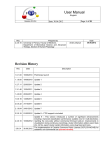
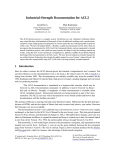



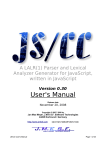

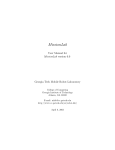
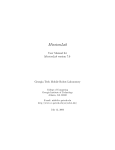




![1 Getting Zabbix [Zabbix]](http://vs1.manualzilla.com/store/data/005748780_1-c6fae7d52ae49b905c6dc80adee0ad61-150x150.png)




